Rebel Raiders Replay: The 1862 Jump Start Scenario
CGC After Action Report
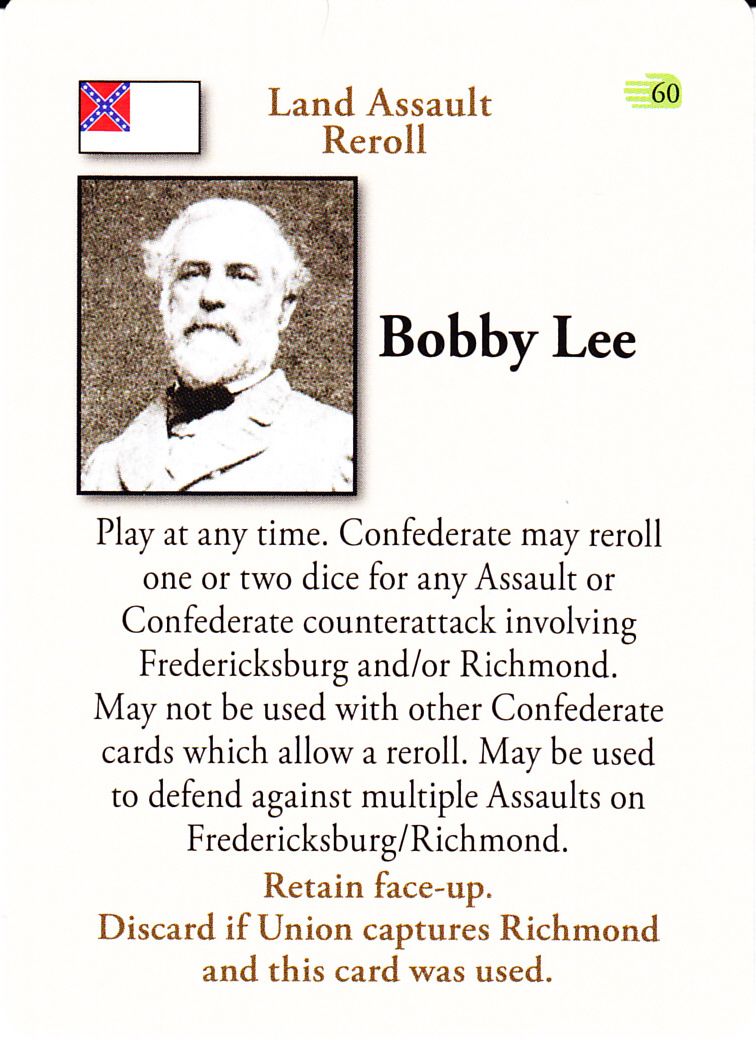
For those who want to dive into the heat of the action, rather than do a slow burn, the alternate 1862 start scenario is the way to jump right into Rebel Raiders on the High Seas. It begins with the Union half of the April 1862 turn. The Union enjoys a dream hand of cards that historically made that such a great month for the North – and a month after which, it was said, the South never smiled again.
Developer Fred Schachter and naval enthusiast Brandon Musler took charge of the Union, with Fred taking responsibility for the Gulf and Western Theater, and Brandon the Atlantic and Eastern Theater. They began the game with a chance to conduct four attacks – as many amphibious as they wished – and three of four failed (save for Union capture of Key West). Designer Mark McLaughlin rolled more “6s” on the dice than anyone should in a single or several turns, thus allowing the South to smile, perhaps a bit early, but grin broadly nonetheless.
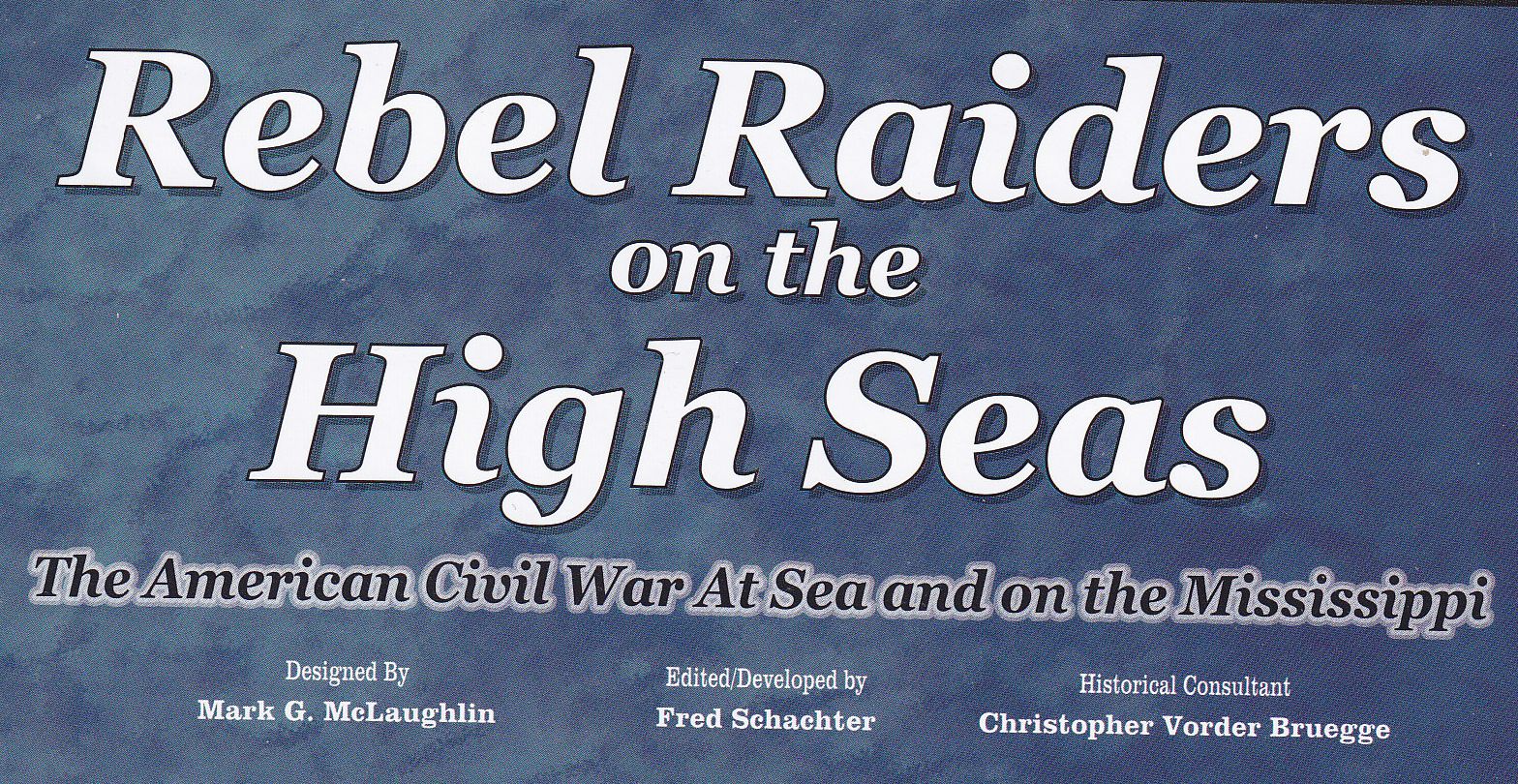

What followed was a wonderful if lamentably brief “happy time” for the Confederacy. Its Blockade Runners brought in enough cargo to allow the purchase of two batteries – in addition to the two normally earned each turn for the Atlanta and Richmond arsenals. Mark employed his largesse to construct a strong “crust defense” by placing batteries at Memphis, Chattanooga, New Orleans, Mobile and Savannah.
This approach leaves the entrenchment of Richmond until later, entrusting its defense to Bobby Lee and Stonewall Jackson (CSN Cards 60 & 104.) Mark deployed J.E. Johnston (Card 91) to command in the West and he also had cards in hand for the Ironclad CSS Manassas (CSN Card 71), Hulks, Rafts, Chains (CSN Card 110) and later the CSS Virginia (CSN Card 70) to help defend any port the Union chose to attack.



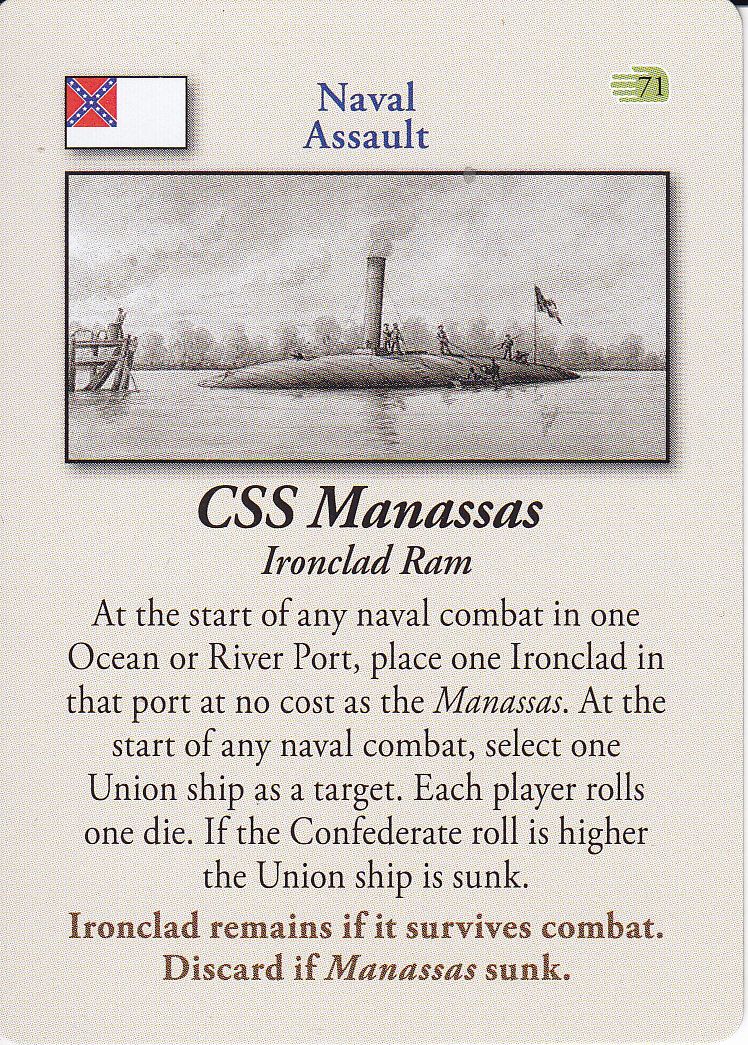
On land Confederate confidence was rewarded. For the remainder of 1862 the Union onslaughts were repeatedly repulsed, including two failed amphibious attacks on Galveston, but at sea it was a different story. In four turns the South lost 25 blockade runners with the Union sinking them literally faster than they could be built.
As 1863 opened, there were more Raiders (five) at Sea than Blockade Runners. The number of Raiders would dwindle to three after the Union built packs of hunter-killer screw sloops. For the remainder of the game the seas stayed blue in more ways than one.
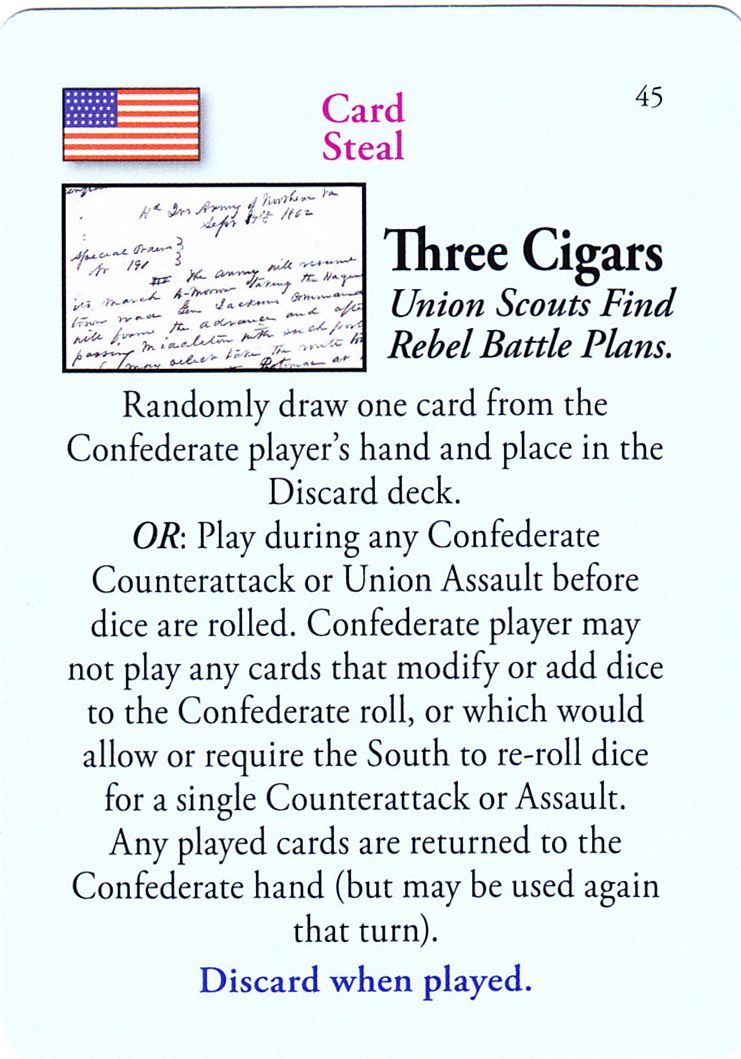
1863 was a
nightmare for the South on land.
The Union broke through the crust defense, playing Three
Cigars (USN
Card 45) which
stopped Stonewall Jackson and any Confederate cards from being
played and enabled the Northern capture of Richmond.
On the following turn the Union cracked the line at Chattanooga – despite a stout defense of three Batteries and J.E. Johnston – and used Grant and Sherman (USN Cards 8 and 50) and other cards to dash down to Atlanta.
Suddenly there were no arsenals to build Batteries and very few Blockade Runners to bring in cargo. There were also less Raiders to destroy Union commerce for Victory Points – and even if more had survived, each turn’s Supply Roll penalties for losing Atlanta and Richmond, plus the standard die roll (three dice in all each turn!) would have rendered their point contributions moot.
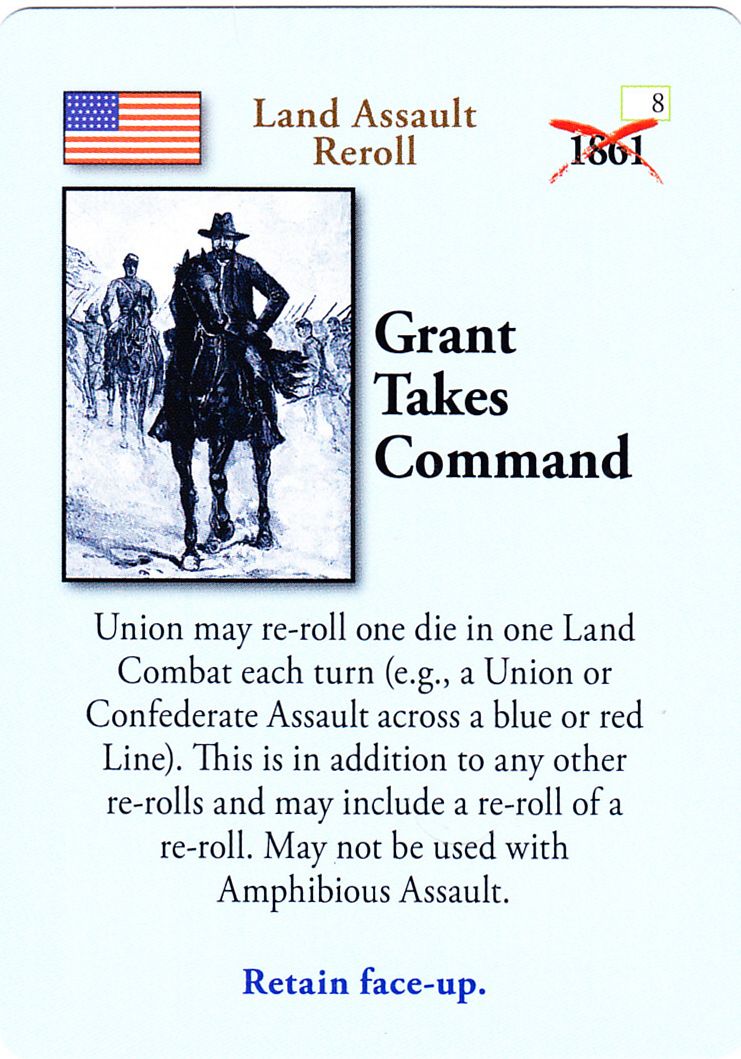


Thus, the rest of 1863 and into 1864 were very difficult for the Confederacy but Mark did not despair; he mounted inspired counterattacks to keep the South viable.
The Union had built a cordon around Richmond by seizing Fredericksburg, Norfolk and Goldsboro but Lee and Jackson nonetheless staged a whirlwind campaign, first recapturing Goldsboro with a regular counter-attack and then Richmond itself with The South Shall Rise (CSS Card 107) to regain the capital of the Confederacy.
After Island No. 10’s capture, successive waves of Yankee Ironclads and gunboats conquered Memphis, which the South successfully retook with a Counterattack.

The Union responded to this last Rebel Western Theatre offensive success by marching west out of Union-held Atlanta to seize Montgomery and Vicksburg via its land approach and then on to capture the Fort of Baton Rouge.
This was complemented, after several failures, by Farragut at long last capturing the fort guarding New Orleans from the Gulf. New Orleans, with its defense of three Batteries, a Gunboat, and an Ironclad was isolated.
In 1864 with more ships than it had jobs for them to do, the Union spent most of its builds on buying extra attacks, thus enabling it to make four assaults a turn. Play of Loose the Fateful Lightning (USN Card 34) added yet an additional attack for EACH remaining turn.
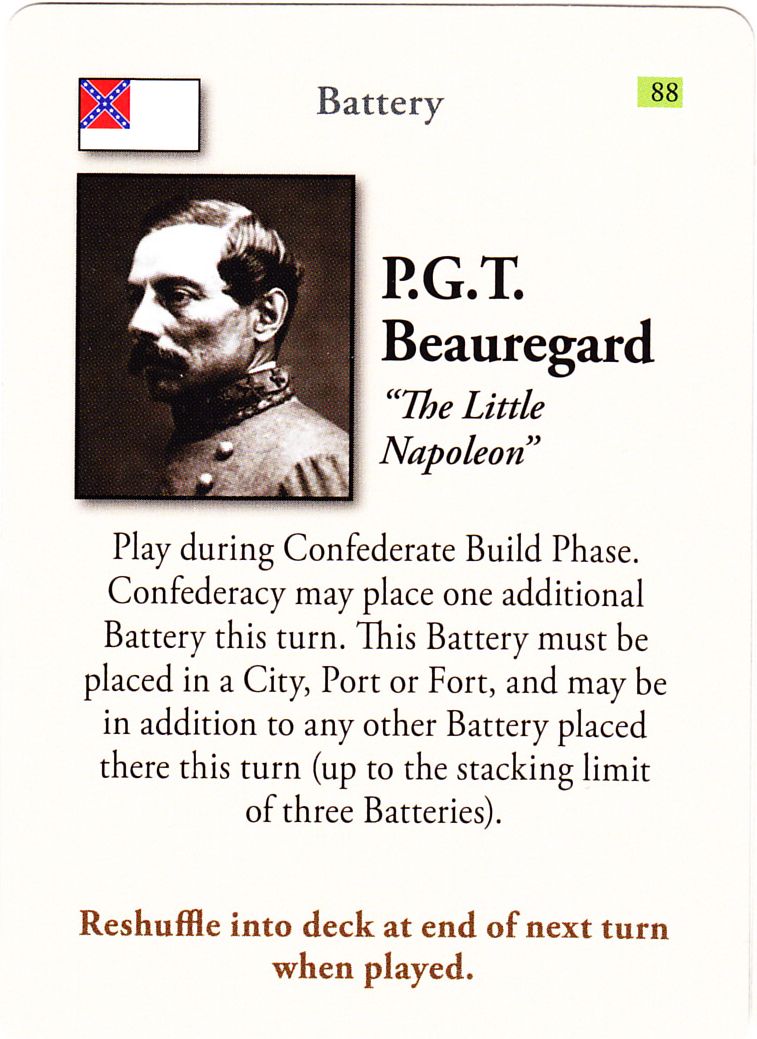
The game was still hanging in the balance on the last December 1864 turn.
With five
attacks the Union had to conquer three key cities.
Mark played the General
Pierre Toussaint Beauregard
(CSN Card 88) card to build a battery in newly
recaptured Richmond and also deployed the cream of Confederate
leadership: Lee, Jackson and even Longstreet!
(CSN Card 79) with
a total of six dice.
The Union was also tasked with retaking a diminished Memphis as well as heavily fortified New Orleans.

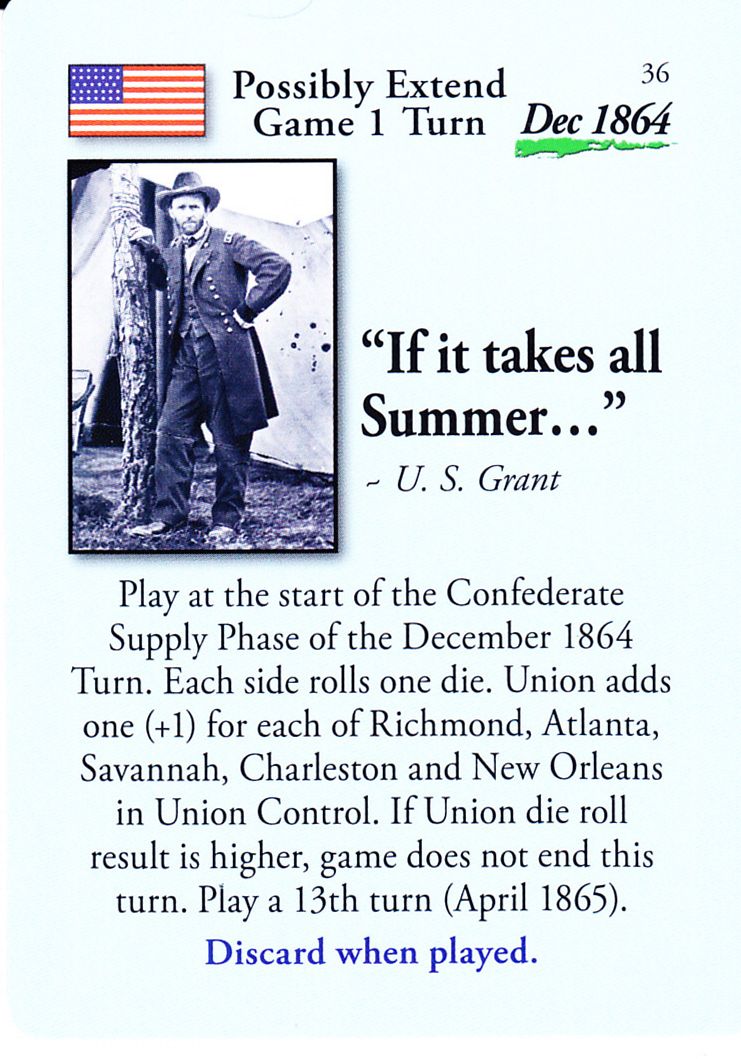
Fred and Brandon debated whether to go for that hat trick or attempt to storm Savannah and Charleston from newly captured Augusta (held by three and two Batteries each, respectively) because they had drawn If It Takes All Summer (USN Card 36) for a possible 13th Turn.
Possession of those ports would improve the Union’s chances to win another election and add an extra game turn. In the end, they were wary of pinning everything on a single die roll, no matter how well-modified, and decided to go all-out for the three key Confederate cities in a final offensive surge.
The night they drove 'ole Dixie down...
And all the people were singing...
They won all three fights, with their fifth attack still left in hand… Damn Yankees!
Parting Shots Dept.,
"Alexander, Caesar, Charlemagne, and myself founded
empires; but what foundation did we rest the creations of our
genius?
Upon force. Jesus Christ founded an empire upon love; and at this
hour millions of men would die for Him"